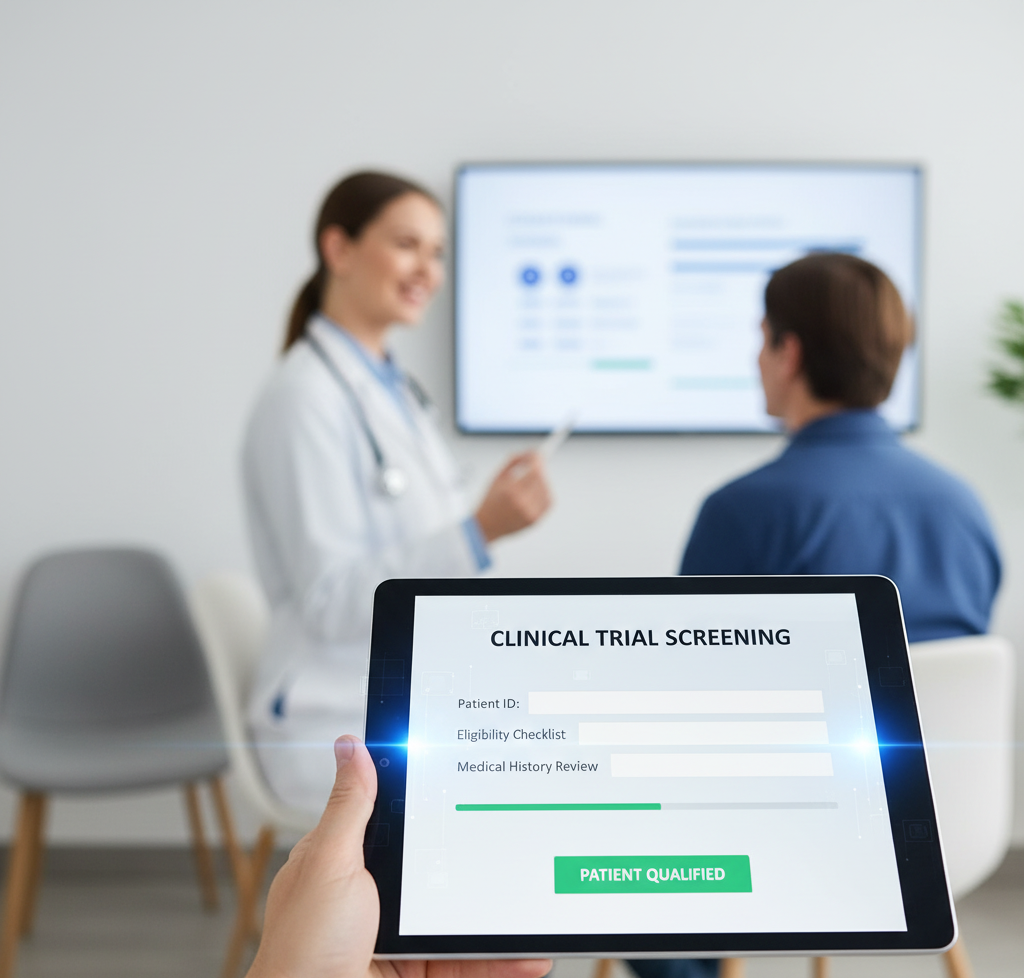The Challenge of Pre-Screening in Clinical Trials
Participant pre-screening in clinical trials is one of the most important steps in clinical research, yet it is also one of the most inefficient. Many research sites spend valuable hours reviewing potential volunteers, only to discover that a large percentage do not meet trial requirements.
Screen failure rates remain a persistent problem. In some therapeutic areas, nearly one in three participants who show interest end up being disqualified before enrollment. This not only wastes time and money but also frustrates patients who may have been eager to contribute. For both sites and sponsors, high failure rates represent a costly barrier to progress.
What Causes Screen Failures?
Screen failures occur for a variety of reasons, but the most common causes include:
Misunderstood eligibility criteria
Protocols are often lengthy and complex. Patients and even recruiters can misunderstand requirements such as age limits, prior treatments, or lab value thresholds.
Lack of accurate patient data
Without up-to-date health records, a patient might appear eligible at first glance but later be excluded once deeper history or lab results are reviewed.
Limited pre-screening before site visits
Too often, patients travel to a clinic only for staff to realize within minutes that they do not qualify. This wastes resources and creates a poor participant experience.
The result? Sites spend more time screening out than screening in, and sponsors are left with delayed timelines and ballooning budgets.
The Role of Technology in Pre-Screening
Digital eligibility tools and AI-driven patient matching
AI-powered platforms now allow for automated checks against trial protocols. A patient can answer a few structured questions online, and the system instantly compares those responses to the inclusion and exclusion criteria. This removes guesswork and surfaces only the most relevant opportunities.
Remote health data collection and EHR integrations
Electronic health records (EHRs) can be securely integrated with trial platforms. This allows key eligibility criteria, such as lab results or comorbidities, to be verified without manual chart reviews. Studies show that using EHRs for recruitment improves both trial feasibility and efficiency by pre-assessing eligibility and identifying targeted populations.
Reducing human error through automation
Automation also reduces inconsistencies that arise when different staff interpret criteria differently. By using standardized digital workflows, sites can ensure that eligibility is applied uniformly and consistently across all potential participants.
In short, technology streamlines pre-screening so that only genuinely qualified participants move forward.
Efficiency Gains for Sites
Sites that embrace smarter pre-screening in clinical trials quickly see measurable benefits:
Fewer wasted appointments
Instead of spending time with candidates who were never eligible, staff focus their efforts on high-probability participants.
Faster recruitment timelines
When prescreening filters are in place, sites hit enrollment targets sooner. An AI-driven trial in cardiology, for example, nearly doubled enrollment speed compared to manual review processes.
Better patient experience
Volunteers who engage with trials want their time respected. By avoiding unnecessary visits, sites build trust and ensure participants feel valued rather than dismissed.
These gains improve morale for staff, strengthen community relationships, and increase the overall reputation of the site.
Building Sponsor Trust Through Smarter Pre-Screening in clinical trials
Sponsors closely watch screening performance when evaluating site reliability. High failure rates suggest inefficiency, poor data management, or inadequate patient engagement.
When sites demonstrate lower screen failure rates through smarter pre-screening, they signal several key strengths:
- Operational efficiency: sponsors know resources are being used wisely.
- Data integrity: eligibility is confirmed earlier, reducing the chance of protocol deviations.
- Confidence in performance: reliable sites are more likely to be selected for future studies.
Sponsors invest heavily in clinical research, so any process that improves predictability and reduces waste builds trust. Smarter pre-screening directly contributes to stronger sponsor-site partnerships.
Real-World Approach: Pre-Screening Before Site Visits
An increasing number of organizations now help sites by conducting pre-screening checks before participants ever arrive at a clinic.
For example, patient engagement platforms use online questionnaires and basic medical checks to identify likely eligible volunteers. These candidates are then referred to sites only after passing the first filter. This means site staff spend less time rejecting participants and more time confirming final eligibility.
DecenTrialz is part of this ecosystem. Its approach involves pre-screening volunteers against trial criteria, covering demographics, condition, and other core factors, before they are referred to research sites. This ensures sites perform secondary screening only on a pool of already-likely-eligible candidates. The outcome is a smoother workflow for sites, higher-quality referrals for sponsors, and less frustration for patients.
Conclusion: Smarter Pre-Screening, Stronger Trials
High screen failure rates have long been a costly challenge in clinical trials. But with the rise of AI-driven eligibility tools, EHR integrations, and automated pre-screening workflows, sites are now better equipped to reduce wasted visits, speed up recruitment, and improve participant experiences.
For sponsors, these advances translate into stronger site credibility, cleaner data, and faster study timelines. For patients, it means less disappointment and more meaningful engagement.
Smarter pre-screening is not just a technical improvement. It is a strategic shift that benefits everyone involved in clinical research.
FAQ
What is pre-screening in clinical trials?
Pre-screening is the process of checking basic eligibility before a participant is invited to a formal site screening visit. It typically involves online questionnaires, phone calls, or health record reviews.
How does technology reduce screen failures?
Technology automates eligibility checks, integrates with health records, and applies criteria consistently. This reduces errors and ensures only the right participants move forward.
Why do sponsors care about pre-screening efficiency?
Efficient pre-screening lowers costs, reduces delays, and increases confidence in trial data. Sponsors prefer sites that demonstrate reliable recruitment performance.
What is the difference between pre-screening and secondary screening?
Pre-screening happens first and uses basic criteria to filter participants remotely. Secondary screening takes place at the site and involves detailed tests and assessments before enrollment.

Leave a Reply